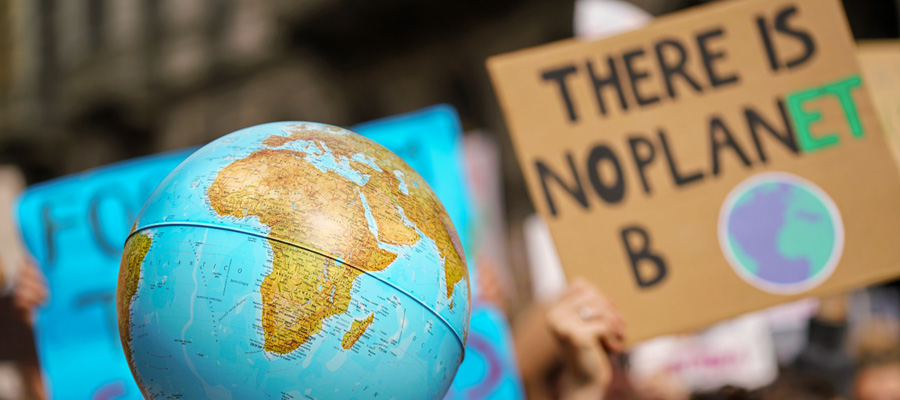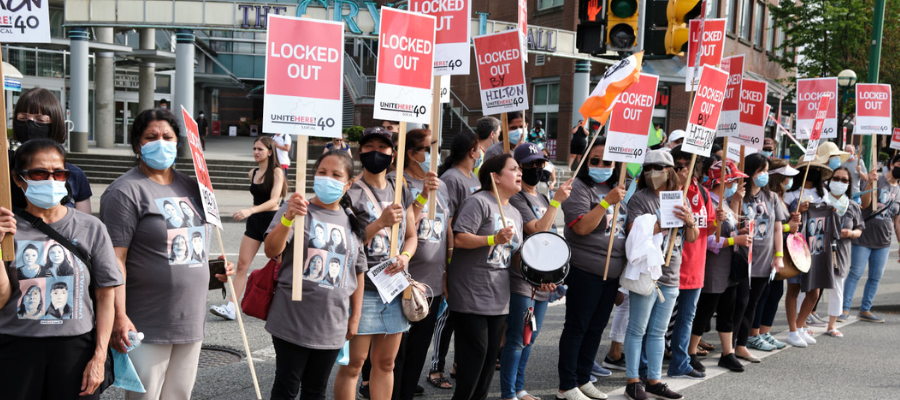When the impossible becomes possible: COVID-19, the climate crisis and lessons from the Second World War

“Canada hasn’t seen this type of civic mobilization since the Second World War. These are the biggest economic measures in our lifetimes, to defeat a threat to our health… We all need to answer the call.”—Prime Minister Justin Trudeau, April 1, 2020, during one of his daily pandemic briefings outside his home.
As Canada seeks to effectively confront the climate crisis and transition off of fossil fuels, much can be learned from the urgency and ingenuity displayed during the Second World War. As it happens, I have spent the last year and a half researching this very connection for my forthcoming book A Good War: Mobilizing Canada for the Climate Emergency (ECW Press). But life is full of curve-balls. Just as my book was going into production, the world was struck by a pandemic crisis that pushed the climate emergency, for now at least, off the front burner.
I chose to frame my book around Canada’s Second World War experience because I sought an historic reminder of how quickly we have transformed society and our economy in the past. As I write, however, we have all been witness and party to such evidence in real time. Suddenly, everyone is drawing comparisons to the Second World War, and our leaders have been immersed in a crash course in wartime economic planning as they seek guidance for confronting the pandemic.
Similarities abound between our wartime experience and the current pandemic response. In contrast to our lackadaisical climate plans, today we are seeing what an emergency response looks and feels like, particularly when the emergency catches us off-guard. The status quo is suspended. Government leaders and public officials hold daily emergency briefings. Emergency Acts are invoked. Federal and provincial cabinets form emergency response committees of key ministers (like the War Committee that oversaw Canada’s Second World War mobilization). Resources and personnel are redeployed. Manufacturing capacity is requisitioned to produce essential products (then it was munitions, while today it is protective medical gear, hand sanitizer and ventilators). Governments assume the power to direct necessary supply chains. Public facilities are repurposed as needed (such as community and conference centres turned into makeshift clinics and service centres). We honour the front-line people making extraordinary sacrifices, some of whom were/are public service leaders, civil servants, and of course health care professionals. But in this battle, most of whom turn out to be lower-wage workers whose labour we so often devalue—hospital cleaners and other sanitation workers, bus and truck drivers, grocery store clerks, child care workers looking after the children of other essential workers, and numerous others whose work we are reminded we cannot manage without.
As Canada seeks to effectively confront the climate crisis and transition off of fossil fuels, much can be learned from the urgency and ingenuity displayed during the Second World War.
As in the Second World War, the news media and journalists have risen to the occasion, quickly retooling their kitchen tables so that they can continue to provide vital public information and rally our collective morale from their homes. In a welcome shift from what has marked climate reporting, in this crisis the media seem to feel no obligation to give credence or space to those who question the scientific evidence. Artists too have rapidly mobilized to keep us entertained and encouraged, as they did in the war, even as their incomes dry up and they are forced to creatively share their work online. And while society’s defenders of civil liberties rightly urge caution and vigilance in the allowance of governmental emergency measures, informed in part by our wartime history, we are on the whole prepared to abide reasonable intrusions in the interests of public health, provided democratic oversight is maintained.
The evolving governmental response to the pandemic in Canada has been, by and large, impressive and bold. Our governments have shown themselves willing and able to pivot to emergency mode with laudable speed and flexibility. We have seen a level of cooperation across confederation and across partisan lines that is unprecedented in modern times. Prime Minister Trudeau, almost all premiers, government ministers, and countless municipal and Indigenous community leaders have shown real leadership thus far.
As occurred in WWII, our governments at every level have appropriately dispensed with the fetishization of balanced budgets and are spending what is required—deficits be damned. Between the audacious Canada Emergency Response Benefit, the Canada Emergency Wage Subsidy, boosts to the Canada Child Benefit and the GST credit, and various loans and aid to businesses, total direct government spending on the crisis is approaching $200 billion. The design of these programs has been imperfect, but the federal government has not allowed such details to derail swift action.
Not only do we newly value and appreciate the role of government and public services, but we have also come to understand that the vulnerable must be urgently looked after, or we are all more vulnerable to this invisible foe. As with the climate crisis, those society has most marginalized are hit hardest. Consequently, we have witnessed a new-found collective willingness to house the homeless (commandeering hotel rooms) and to offer income support to those who cannot work, so that people can properly shelter in place for the benefit of all. In numerous provinces, evictions have been banned and rents frozen (albeit temporarily). The federal government is boosting Canada’s international aid, despite our heightened domestic demands, given the global nature of the pandemic.
As occurred in WWII, our governments at every level have appropriately dispensed with the fetishization of balanced budgets and are spending what is required—deficits be damned.
The emergency response to protect the most vulnerable has been far from perfect—the desperation of Canada’s poorest communities has only heightened, Canada has turned asylum-seekers away at the border (allowing fear to trump our human rights obligations), and support for migrant workers within Canada has been weak. The coronavirus pandemic has revealed and exacerbated all the existing inequities in our economy. It has laid bare the interconnections of the crises we face—the inequality crisis, poverty and homelessness, the opioid crisis, the rise of employment precarity, and the ecological crises. Yet now we seem prepared to at least recognize and begin to repair these interlocking fissures.
Just as social solidarity was vital for wartime mobilization, so it has been in this crisis. And our displays of such solidarity have been beautiful. Yes, just like in the war, the early days were marked by a minority of people who responded in selfish or panicky ways, engaging in anti-social behaviour—hoarding, attempted profiteering, or willfully ignoring public health appeals to keep physical distance. And as in the war, anti-Asian racism rears its ugly head. But this time, our governments have denounced such behavior rather than inciting it. Overall, as Rebecca Solnit recounts and predicts in her book A Paradise Built in Hell, the large majority of us have shown our best selves. We have heeded the instructions of public health officials, done our best to protect the vulnerable, organized “mutual aid” networks, and looked out for and delivered food to our house-bound neighbours. We emerged from our homes each evening to bang pots in thanks to health care and other essential workers. We’ve stayed calm and done our best to educate and entertain our children. We have cooperated.
We have also shown ourselves capable of changing our ways with remarkable speed, figuring out how to work from home and to employ technology to socialize remotely with friends and loved ones. As in the war, this pandemic has forced a change in our daily household and employment routines and practices. After rigidly insisting for years that people must commute into work and meet in-person, employers and employees have quickly discovered the potential (and even the benefits) of tele-commuting and video-conferencing. Even parliamentary committees, city council meetings and other governmental decision-making have moved to virtual platforms, and the prime minister himself has worked and held meetings and media briefings from home. And, of course, everything but the most essential domestic air travel has come to an abrupt halt. A welcome side-effect of all these COVID crisis adjustments has been that greenhouse gas emissions and harmful air pollution in Canada and globally have dropped (but in the absence of other actions, this will only be a temporary effect).
Not only do we newly value and appreciate the role of government and public services, but we have also come to understand that the vulnerable must be urgently looked after, or we are all more vulnerable to this invisible foe.
As our governments spend billions beyond what they originally budgeted and as the economy heads into a deep recession, 2020 will see a large spike in Canadian government debt-to-GDP. Yet this jump is perfectly manageable. Our government debt levels are historically low, leaving Canada well-placed to weather this storm. And with much of this new debt being owed to the Bank of Canada, which throughout the COVID crisis is mass purchasing government bonds on a weekly basis, our public finances can withstand this crisis just fine. Indeed, with investors spooked and looking for a safe harbour, now is the perfect time to launch an ambitious public “Victory” bond drive like we did during the war. Let’s invite the public to contribute to an economic recovery plan. And with interest rates at an historic low, our governments at all levels should be borrowing like never before to finance the climate and social infrastructure investments now urgently needed. As economist Jim Stanford has written, “The Government of Canada can now issue 30-year bonds for well below 1% annual interest. That is negative in real terms (i.e. lower than inflation). So quite literally, the government will save money by borrowing more (paying back less in real terms, after 30 years, than they borrowed)—to say nothing of the economic and social good that would be done by putting that money to work in emergency public projects and services.”
Overall, while the economic situation may feel chaotic and ominous, in real economic terms, the spending now underway merely shows what we could have done in response to the climate emergency, poverty and homelessness all along.
All of this represents proof positive that, given the will, we are indeed capable of rapidly rising to the climate challenge. The curse of the climate crisis, it turns out, is that, in comparison to the pandemic and the war, it moves in slow motion, and has thus failed to sufficiently galvanize us—so far.
As our governments spend billions beyond what they originally budgeted and as the economy heads into a deep recession, 2020 will see a large spike in Canadian government debt-to-GDP. Yet this jump is perfectly manageable.
There is a key difference between the wartime and climate crises, on the one hand, and the coronavirus pandemic on the other. The war effort and climate mobilization demand that we get out and build what was/is required for the transition, while the pandemic has obliged us to stay home. Consequently, whereas the war and climate action were and can be a boost to the economy and job creation, the COVID-19 crisis represents a massive hit to both. The fact that climate action is a positive on these fronts, however, is welcome news; just as the Second World War ended the Great Depression, as we rebuild from this pandemic, an ambitious climate plan with massive green infrastructure spending—the Green New Deal—can be just what the doctor ordered.
The vital and urgent challenge now is to ensure that, as we emerge from the coronavirus crisis, we use this experience and the opening it creates to catapult our societies into the post-carbon economy. As writer Arundhati Roy urges, this pandemic, like past ones, should be seen as “a portal, a gateway between one world and the next.” We must not return to yesterday’s normal, with all its inequalities and fossil fuel reliance. This pandemic has the potential to dramatically jump-start our efforts to decarbonize—to accomplish massive emission reductions in a few short years. But this is not assured. On the contrary, we are certain to see a great battle over what the return to post-COVID “normal” looks like. The new climate denialists in industry and government are already seeking huge public bailouts for the fossil fuel sector, airlines, traditional auto manufacturing and more. Will we seek to quickly restore the main industries of before, or will we embrace this historic moment and the massive government expenditures any rebuilding efforts will inevitably require to permanently re-make our economies?
Another vital difference between the COVID and climate emergencies is the degree to which they catch us unprepared. Our governments have not yet seen fit to adopt a wartime-scale response that pre-emptively tackles the climate crisis. We mobilize to put fires out, but not to prevent them. But climate change-induced disasters and disruptions in growing frequency and severity are coming. We are going to be pressed into service one way or another, and our character tested. The only question is whether we will be mobilized exclusively in moments of disaster not of our choosing—as we have been in this pandemic—or can we assume agency and mobilize pre-emptively on our own terms?
Tackling the climate emergency isn’t just an obligation—it is, like the pandemic experience is showing us, a generational opportunity to re-find a sense of shared purpose.
While the task of confronting the climate crisis frequently feels daunting, recognize that once we truly see this time as an emergency, and properly throw ourselves into the climate fight, an “all-hands-on-deck” experience will transform us in many ways, individually and collectively, and much of that will be for the better. Tackling the climate emergency isn’t just an obligation—it is, like the pandemic experience is showing us, a generational opportunity to re-find a sense of shared purpose.
The global and Canadian pandemic story is still unfolding. The full extent of the crisis to both human health and the economy remains unknown. Our Second World War story, however, is known, and the speed and scale of what we accomplished was stunning. A clear conclusion from all these crises, past and present, is that humans are amazingly resilient and capable of accomplishing great things with remarkable rapidity when the circumstances require.
The COVID-19 pandemic has reaffirmed the role and value of ambitious government action. It has reminded us of our mutual reliance. Social solidarity and support for public services is likely at a generational high. There is a new spirit of national cooperation in the land upon which we must now capitalize. The public emerges from the COVID-19 crisis with new respect for scientists and scientific evidence. We collectively now understand that the more our economy is localized, the more resilient we are to disruptions. The economy now urgently requires public investment to rebuild from the pandemic. Combine all these new realities, and the time has never been more opportune for true climate emergency mobilization.
This post is part of the Corporate Mapping Project, a research and public engagement project investigating the power of the fossil fuel industry in Western Canada, led by the University of Victoria, the Canadian Centre for Policy Alternatives (BC and Saskatchewan Offices) and Parkland Institute. This research is supported by the Social Science and Humanities Research Council of Canada (SSHRC)
Topics: Climate change & energy policy, COVID-19


